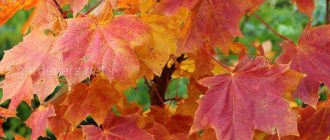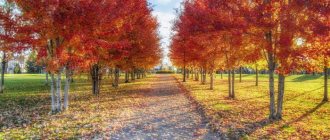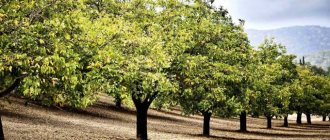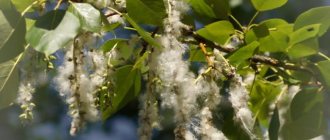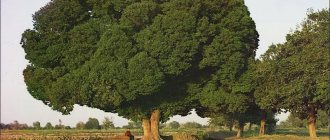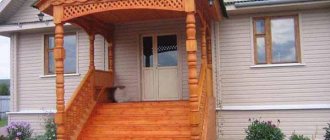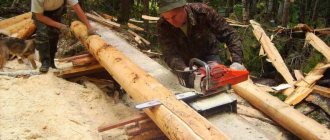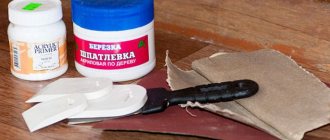Care
In early spring, silver maple requires sanitary pruning. The choice of the spring period is justified by the fact that the tree has not yet fully “woke up” from winter and has a strong immune system. This means that he is not afraid of pruning, which in the summer, for example, without proper treatment, can infect the plant.
Watering
Immediately after planting and in the first few years, the plant will need abundant watering; do not forget about this, because maple does not really like drought. Experts have calculated that one tree requires an average of 15–20 liters of water, although in severe drought and hot weather the amount of watering should be increased. Mature trees, unlike young ones, do not need to be watered as often
It is also very important to mulch, usually to prevent the maple from drying out. For this, for example, you can use moss
Top dressing
It is recommended to do the first fertilizing only a year after planting the tree. To do this, you can use fertilizers with potassium, nitrogen and superphosphate. Potassium is usually taken no more than 15–20 grams, and the other two ingredients are taken in equal parts of 50 grams. The finished mixture is mixed and then applied to the ground prepared in advance under the young tree.
In order for the fertilizer to work as expected, the soil should be dug up about 10 cm before applying it. During subsequent waterings, the fertilizer together with water will nourish the roots of the young tree.
On average, an adult tree should be fed no more than 3 times unless absolutely necessary, otherwise the plant may have an excess of vitamins, which can lead to root system disease.
Loosening
Loosening of the soil is not carried out to too great a depth, so as not to injure the root system of the tree. Usually in late spring and early summer, when loosening, you can immediately apply fertilizer.
Diseases and pests
The most harmful insects are:
- Aphid;
- Scale insects;
- Butterfly caterpillars,
- Gall mite;
- Woodworms, etc.
The tree is susceptible to various diseases and fungi:
- Cancer;
- Powdery mildew;
- Late blight;
- Anthracnose;
- Coral spotting;
- Tar spotting, etc.
Meaning and Application
There are many known uses for Norway maple. Since ancient times, young leaves have been consumed as food, they were added to salads and soups. In early spring (late February, March), juice with a sweet taste was collected from cuts in the bark. Maple syrup was boiled from it, sugar was evaporated, vinegar was fermented, and various drinks were prepared.
In autumn, maple trees produce a lot of litter, which is an excellent way to improve the soil. Fallen leaves are dug in or collected in compost heaps. In agriculture, Norway maple is used to create windbreaks, since maple grows especially quickly in the first years of its life (up to 1 m in height per year), and then the speed slows down (from 30 years old) and stops (by 50 years old). This allows you to get a dense barrier strip in a few years. From 1 hectare of plantings, bees collect up to 200 kg of honey, which has healing properties. In gardens, the crown, which releases a lot of phytoncides into the air, protects nearby apple and pear trees from pests and diseases. A powerful root system prevents soil erosion, so Norway maples are planted where it is necessary to strengthen crumbling slopes.
The wood is hard, has a high dead weight, but is easy to process. The properties of the material are higher than pine and closer to oak. Musical instruments and all kinds of souvenirs are made from Norway maple; plywood and cellulose are obtained from it, and used in the decoration of houses. The lowest quality wood is used for firewood.
Use in landscape design
Norway maple is well suited to grow in an urban environment. The polluted air does not harm it, but it cleans it itself. For this valuable quality and almost year-round bright beauty, the tree is loved and planted everywhere: in gardens and parks, along alleys and next to schools, hospitals, kindergartens.
The seedlings look very elegant surrounded by conifers; with them they form a picturesque contrast in the fall, when the maple foliage transforms and turns red or yellow. You can purchase seedlings of different ages. The most affordable are young ones (3-5 years), which are sold with an open or closed root system. Semi-mature trees (up to 10 years old) of decorative varieties in tubs, 100% ready for quick landscaping of a home garden, are more expensive.
Maple pests
Tamara Galasyeva, Candidate of Agricultural Sciences
Various maple species feed on about 200 species of harmful insects and herbivorous mites, which damage leaves, shoots, branches, trunks, roots and seeds. The infestation of maples by pests is rarely widespread, so the wrong impression is created that these plants are almost not affected by insects.
Most of the harmful insects recorded on maples are polyphagous, and their number increases in areas with a warm climate, in the south of the European part of Russia, as well as in Moldova, Ukraine, the Caucasus, Central Asia, and the southern regions of the Far East.
Leaf-eating insects
Leaf-boring pests include pests whose larvae eat holes in leaves or eat them entirely. These are mainly caterpillars of butterflies of various families: leaf rollers (omnivorous, hawthorn, variegated golden, etc.), moths (smoky dotted, winter, peeled, etc.), noctuid moths (maple winged, pear, etc.), red-tailed moths , gypsy moth, etc.), corydalis (maple, humpback, silver hole, etc.), woodlice butterflies of the family Limacodidae, as well as maple sawfly larvae. Leaf-cutter bees gnaw out small, almost round holes in the leaves. The maple leaf weevil beetles eat the leaves from the edges in the form of small, irregularly shaped cutouts.
Sucking pests
These insects suck juices from leaves, shoots, branches and trunks. These include several species of aphids, including the giant maple aphid, which sucks sap from trunks and feeds in colonies in cracks in the bark of growing trees. 17 species of coccids have been recorded on various types of maple: scale insects, false scale insects and mealybugs, most of which can be found on other deciduous species. The most common scale insects found on maples are (willow and comma scale), acacia false scale, maple mealybug and maple feltbug. The larvae and adult insects of the maple whitefly suck the juices from the underside of the leaves.
Leaf-mining insects
This group includes mainly caterpillars of small species of butterflies - moths and sawfly larvae, which gnaw tissue inside the leaf, laying passages of various shapes, noticeable on one or both sides.
More often on maple leaves there are small, light, oval-shaped mines of the maple moth, visible on the underside, and brown, large, slightly swollen mines of the maple blister sawfly, visible on both sides of the leaf.
Gall formers
This category includes 13 species of herbivorous mites that form galls, tubercles and warts of various colors on the leaves. Galls of the maple felt mite are most often found on maple leaves. The galls are initially white and later turn brown.
Xylophagous
These are insects that mainly inhabit the trunks and branches of drying and withered trees. Several species of bark beetles live in maple wood, including gypsy and sapwood, longhorn beetles of the genus Rhopalopus, green narrow-bodied borer, horntails of the genus Xiphydria and some others.
Root pests - rhizophages
Maple gallworm larvae develop on the thin roots of living maples, forming dense spherical galls up to 8 mm in diameter.
Seed pests - carpophages
Not only birds and small rodents feed on maple seeds, but also insects, including caterpillars of codling moths and seed-eating weevils.
| Galls on a maple leaf | Redtail caterpillar | Maple shooter caterpillar |
Types of maples
Among the species diversity of maples, several of the most common and popular are distinguished.
Holly
This species is one of the most famous, includes several varieties, and grows throughout the European part of Russia. Another name for maple: sycamore or plane-leaved - based on the characteristic shape of the leaves (pictured).
This species includes many decorative forms, differing in the height of the trunks, the size and density of the crown, and the shade of the leaves. Norway maple is picky about soil composition, prefers moderately moist fertile, slightly acidified soils, and does not tolerate sandstones and rocky soils. These trees reach a height of 20–30 m and have a wide, rounded crown. The bark is light gray, quite smooth in young maples, but becomes cracked with age. The size of the leaves is about 15–18 cm, they are located on long thin stalks, have a five-lobed shape with pronounced notches: the middle lobes protrude far forward, the lateral ones are slightly shorter. There are types of maple with hornbeam or ash-like foliage: small, serrated, elongated leaves arranged transversely on long cuttings.
In autumn, green maple foliage acquires bright yellow, orange, red and burgundy shades, creating a picturesque natural carnival of colors. The five-lobed maple leaf is featured on the Canadian flag.
Trees grow quickly, especially in the first years after planting; their lifespan is up to 200 years. Norway maples are immune to the polluted air of cities, so they are suitable for landscaping streets and creating beautiful landscapes. They are planted along roads, in courtyards, in squares and parks.
Norway maple is distributed throughout European territory, Western Siberia, and the temperate zone of the North American continent.
American
This tree is widespread in the northern and eastern regions of the United States, being the official symbol of some states. Another name for the species is sugar maple. It is from the sap of its wood that the famous maple syrup is made, and lumber is used in construction. American maple is resistant to cold climates, can grow up to 30-40 m, has thick dark bark and a dense crown.
This species is often called sycamore or false sycamore. Slender trees up to 30 m in height have a thick tent-shaped crown. The foliage is dark green, the back side is much lighter - whitish, slightly bluish. Sycamore does not tolerate severe frosts, so it is rare in the middle zone; it grows mainly in the Caucasus, the Carpathians, and the southern regions of Europe.
It is also called black maple. More often it forms shrub forms no higher than 9 m, the crown is spreading. The bark is dark, almost black, the foliage has finger-like lobes, dark green, and smooth. The Tatarian maple blooms beautifully; in the spring, pale pink, rather large inflorescences, similar to bells, form on the branches. Black maple grows quickly, is easy to trim, and is used as an ornamental plant. It tolerates drought quite well and is widespread in the steppe regions of the European part, the Caucasus, and the Balkans.
A large shrub, dense and tall, up to 15–20 m. The foliage is five-lobed, bright green, the bark is dark, grayish or brown, the inflorescences are small and inconspicuous. Field maple has good adaptive properties, adapts to almost any climatic conditions, is wind-resistant and shade-tolerant, and can easily tolerate short-term drought. Grows in deciduous forests, forest-steppe zones, and in urban environments.
Where else are maples used?
Many types of maple have valuable wood, which is used in the furniture industry, for the manufacture of sports equipment and musical instruments, in particular bowed instruments.
The sap of maple trees contains quite a lot of sugar, especially in species native to North America, such as the sugar maple (Acer saccharum). In Canada, the sap of this maple is used to obtain maple sugar, and its leaf is the national symbol of the country. A stylized image of a carved sugar maple leaf appears on the jackets of Canadian hockey players and on the Canadian flag.
Useful properties
The photo shows very clearly how beautiful the Canadian maple is. No wonder it is so valued in the USA and Canada. Maple syrup is very sweet and can be included in a variety of dishes. The seeds and juice of this plant have medicinal properties. The juice contains vitamin C, so it can quickly relieve colds. A medicine made from leaves that dissolves stones in the urinary and gall bladder. So Canadian maple can rightfully be considered a cure for all diseases, and also incredibly tasty. Maple sap is sweeter than birch sap. So it’s not for nothing that Canadians decorated their national flag with a sugar maple leaf.
This tree has valuable wood that makes excellent furniture, housewares and sports equipment. Wood is difficult to damage and is stable. But dense wood is difficult to process. Maple wood has a very beautiful pattern with numerous rays. It can be used to make parquet or any other flooring. Even in the manufacture of musical instruments, maple wood is widely used.
It is not at all necessary to use only fruit-bearing tree species to design a plot. Canadian maple looks very impressive at any time of the year. He has taken root remarkably well in Europe. It can rightfully be considered the most beautiful deciduous tree.
A maple grown using the bonsai technique will serve as a wonderful decoration in the house. In March, the seeds are placed in damp sand for 3 days. Plant seeds in a greenhouse. They grow there for 2-3 years.
In the sultry heat, everyone dreams of sheltering under the lush crown of such a tree. Maple will gladly accept you into its lush and strong embrace. The original shape of the crown, bright leaves, interesting fruits - all these are good reasons to place such a beauty on your property. This tree is an excellent honey plant. You can use it as a hedge. Many people note the positive energy of this tree. Therefore, we recommend that you definitely have some wooden products made from Canadian maple at home.
Characteristics and scope of application
Maple is a favorite plant of landscape designers. It attracts with its elegance, spectacular openwork leaves with an unusual color. The barrel has a smooth surface with increased shine. It is actively used in the design of city parks, recreation areas, and garden plots.
- In addition to its decorative properties, maple is used in furniture production and construction.
- The most popular is Canadian maple, which boasts its high strength characteristics.
- The wood of this tree has excellent wear resistance and has a beautiful shade.
- Due to the numerous species of this tree, the hardness of the wood of each is different.
- Drying wood should not be fast and should not exceed 45 degrees Celsius, otherwise cracks will inevitably appear.
When processed, maple wood bends, glues, polishes, and is treated with dyes and antiseptics.
Certain types of maple are used to make musical instruments, interior items, kitchen utensils, and various crafts. The completed products do not deform, do not warp and last a long time.
The plant is also used in the food industry. Confectioners often use maple syrup when preparing desserts.
Popular types and varieties of maple
Norway maple
Norway maple is the most popular species, growing 15 – 20 m tall. Frost-resistant. Its trunk is straight and its crown is widely rounded. The leaves of the Norway maple are five-lobed and green. The yellow-green flowers of this maple are collected in corymbs. Blooms at the beginning of foliage.
Norway maple has different varieties: with red foliage - varieties “Rubrum”, “Crimson King”, “Crimson Center”, “Faasens Black”, “Deborah”.
With yellow foliage - varieties “Golden Globe” (when it blooms it is pinkish, and at the end of summer it turns yellow), “Priceton Globe”.
With variegated white-green foliage - Norway maple variety “Drummonda” with forms: white-edged - Albo-Marginata and variegated - Albo-Variegata. Norway maple has a varied crown shape: there are varieties with both the spherical “Globozum” and the conical “Columna” crown shape. All of the above varieties of Norway maple are frost-resistant.
Ash maple
Maple is very popular and widespread in urban landscaping. It reaches a height of 20 m. The leaves of the ash-leaved maple are complex, odd-pinnate, reminiscent of ash leaves. The simple form with green foliage is not decorative, but is so durable that it is used in urban landscaping.
As an ornamental shrub, a beautiful variegated form is used - the ash-leaved maple “Flamingo” with whitish-green foliage and pink spots, and also species with yellow foliage of several forms “Aureum-Variegatum” - golden-variegated and “Aureum-Marginatum” golden-edged . The varieties “Auratum”, “Elegance” and other variegated forms are also decorative.
Ash maple varieties are very winter-hardy. There are varieties of this maple that do not bloom. Ash maple propagates by cuttings and grafting. There are other forms with purple foliage, silver-variegated leaves and fluffy twigs or curly foliage.
Tatarian maple
Tree or shrub 10 m in height, rounded crown. The foliage of the Tatarian maple is toothed and ovate. In autumn with red or yellow color. Tatarian maple is very decorative during the flowering period - inflorescences with cream or white flowers.
It has a beautiful shape with red leaves in autumn. Winter-hardy. Tatarian maple propagates by cuttings and seeds. Shade-tolerant.
Falsebold maple
The false siebold maple is one of the most decorative maples, 8 m tall, the foliage is delicately indented, palmate, green, in the fall it is yellow, then turns pink and red.
Excellent replacement for non-wintering Japanese maple species. Large cream flowers of the false siebold maple are collected in a racemose inflorescence. Shade-tolerant, winter-hardy. Unpretentious. The false siebold maple propagates by cuttings.
Guinnala maple
Tall maple up to 6 m tall. The crown of the ginnal maple is wide. The foliage is leathery, elongated, green, turning red in autumn. Yellow fragrant flowers are collected in inflorescences.
Red or green lionfish are very decorative. The ginnala maple is winter-hardy. Propagates well by cuttings and shoots. Can be trimmed and forms dense hedges.
Field maple
A low tree 10 m tall, with very decorative narrow and small leaves. Not very frost resistant. In the first years it is necessary to cover and mulch.
There are many beautiful forms with purple or variegated leaves. Rarely appears on sale.
Maple mono
The tree is 15 m high, the crown is wide. Maple foliage is mono green and small.
Frost-resistant species, but it is better to cover young seedlings with spruce branches. Mono maple is shade-tolerant. Rarely found on sale.
Silver maple
An ornamental tree 30 m in height with drooping branches and five-lobed leaves, covered with a silvery coating underneath, it looks beautiful when the leaves sway in the wind.
Silver maple is frost-resistant, but after planting for the first time it is better to mulch and cover with spruce branches. It has beautiful forms with rugged foliage - “Viera”, as well as a pyramidal and weeping crown shape. Does not tolerate calcareous soils and groundwater.
Sugar maple
Distributed in Canada, but winters well in the middle zone. 20 m high, green-yellow leaves. Requires a high potassium content, prefers calcareous soils. It doesn’t bloom here, it grows slowly. Shade-tolerant. Sugar maple propagates by cuttings.
It is necessary to mention those types of maple that adorn magazines on landscape design, but, as a rule, are not suitable for us due to their lack of frost resistance - red maple, palmate maple, false sycamore maple. We still need to find out the winter hardiness of some species and varieties with unusual foliage.
Rules for planting and growing
Planting a maple tree and further caring for it is not difficult and does not include trimming. The tree is undemanding to soil. Planting takes place in spring and autumn.
It is better to shade the young seedling from direct sunlight in summer. The trunk grows straight. The maple crown independently forms into a symmetrical, beautiful shape.
Often shrub types are used as a green hedge, in which case the plant is subjected to formative pruning.
Field, plain or Neklen maple (Acer campestre)
This type of maple is used for park plantings due to its medium growth. In addition, it is very undemanding to growing conditions and does well in urban conditions of gas pollution and dust. The tree grows up to 12-20 m in height and is characterized by a broadly conical crown consisting of bright green five-lobed leaves. After all the leaves on the tree have blossomed, flowering begins. Flowers cover the crown and give the tree a very decorative appearance. The trunk is covered with light brown bark with light white stripes. This species is slightly frost-resistant and prefers to be grown in warm climates. Bonsai is often made from this species, since the tree tolerates cutting and shaping well. The plant has stable immunity against diseases and damage from insect pests. The root system is very powerful and branched, thanks to which the tree tolerates drought and soil compaction well.
This species has several varieties that differ in popularity:
- Field maple Elisriysk. A tree of this variety grows up to 8 m in height. It has a dense crown of a spherical configuration. The crown circumference is about 5 m. The shoots are covered with large five-lobed leaves. The leaves bloom in mid-spring and are reddish in color. When grown in the sun, they change color to yellow. When grown in the shade - green. During flowering, small yellow-green flowers bloom, collected in corymbose inflorescences. At the end of flowering, two-winged seeds are formed.
- Field maple Red Shine. This tree is short in stature, about 5 m. Its crown and spreading trunk are covered with gray bark. The leaves are large, multi-lobed, and have a red-purple color. It blooms with yellow or green flowers collected in medium-sized inflorescences.
- Field maple albovariegatum. This variety is characterized by trees no more than 5 m high. It is used to create hedges. It has a strong trunk and a wide branched crown, which is formed from the bottom of the trunk. The bark is silvery in color and covered with small cracks. The large leaves are light green in color, changing to yellow in the fall.
- Field maple Queen Elizabeth. This variety is characterized by fast growth rates and vertically growing shoots that form a narrow pyramidal crown configuration. The crown circumference reaches 10 m, the height of the tree is 80 m. Due to the shape of the crown, this variety is often used to decorate alleys and garden parks. In mid-spring, the shoots are covered with large leaves that are light green in color. The plant feels good when grown in shaded areas, but cannot grow in marshy soil. It also tolerates gas and dust in the atmosphere well, which is why it is often grown in large cities.
- Red field maple. It has a slow growth rate, grows up to 8 m in height. It has a decorative branched crown. The tree got its name due to the fact that its young branches are dark red in color. During flowering, the entire crown is decorated with small green-yellow flowers that form racemose inflorescences. At the end of flowering, lionfish about 3 cm long are formed, which consist of one large seed. The palmate leaves are olive green in color. The root system is branched and located in the upper layers of the soil. Reproduction occurs by root shoots or by seeds.
- Field maple is spherical. This variety received its name due to the spherical shape of the crown. The tree is characterized by slow growth and grows to a height of no more than 5 m. Young leaves have a red-orange color, changing to golden yellow in the sun. The flowers are small yellow-green, forming paniculate inflorescences. Lionfish fruits. The root is highly branched and grows in the upper layers of the soil. The crop is propagated by root shoots, seeds or grafting.
Description of maple tree
The main feature of maples is their spectacular carved leaves of unusual shape. In most varieties they are palmate, consisting of five lobes. Some species are shamrock-shaped. There are complex leaves, with the number of blades from 3 to 7, in rare cases - nine.
Another feature by which maple is easy to recognize is the lionfish fruit, which helps the plant disperse seeds. Thanks to two symmetrical wings, they begin to rotate when falling, significantly increasing the distance covered.
Light-loving plant. The lifespan varies greatly, depending on the species and conditions, it can reach from 30 to 400 years.
Description of red maple
Maple plant is a popular genus, which includes 160 different species, for example, some of them are: American maple, bearded maple.
It grows on absolutely any soil, only swampy ones are not suitable.
This plant attracts attention with the special shade of its leaves. Like all other plants, maple leaves contain chlorophyll.
Like all other plants, maple leaves contain chlorophyll.
In summer, the color of maple is green.
But this tree also contains anthocyanins and carotenoids. They give the leaves red, orange and unusual yellow hues.
The maple fruit is also interesting.
Its crown is oval or round. It often resembles the shape of a porcini mushroom.
- The color of maple wood is light silver.
- It just goes perfectly with the red leaves.
- The leaves are five- or three-lobed.
Characteristics of the species
Maple with red leaves tolerates frost well. It can withstand temperature conditions down to -20 degrees inclusive.
The plant does not like constant humidity and sufficient light.
At the end of August, the tree can already be pruned, which helps rejuvenate the plant. This is allowed until December.
Attention! In the spring months, it is strictly prohibited to carry out these actions, since during this period the maple selects from the soil the nutrients necessary for normal life. Thus, it is possible that the plant will be harmed
Vaccination is done in spring and summer through budding.
Red maple varieties
There are different types of red maple. Thus, maple, the most popular varieties, is used for landscaping parks, gardens and other public places.
"Red Sunset" is the most famous variety of wood. There is a high content of carotenoids in it. This is why the leaves of this maple tree are bright red.
Another variety, “Royal Red,” has a bright red crown color at the beginning of the growing season. Gradually the shade takes on dull outlines.
'Drummondi' - the leaves are pink when they open. After some time, the color changes to light green.
Shrub maples
Among the maples there are also shrubby species that fit well into small gardens.
They also tolerate shearing well, so they make very dense and impressive hedges. These maples include - in addition to the above-mentioned riverine maple and false Siebold maple - also bearded maple, curled maple, Tatarian maple.
Bearded maple (Acer barbinerve) is very beautiful during flowering; in autumn it can boast dark yellow or orange leaves, and in winter its young shoots with purple-red bark stand out against the background of white snow. It shapes and cuts beautifully.
Very decorative throughout the growing season North American
Types and varieties with photos
Despite the diversity of the crop in question, several dozen ornamental varieties can be grown indoors. Let's take a look at the description of the most popular of them:
Abutilon Bella
This is a compact branched bush. The plant blooms profusely throughout the growing season.
Inflorescences of various colors are made in the shape of a bell. The diameter of the bud is from 7 to 10 centimeters.
Abutilon Megapotamian
Formed from thin drooping shoots. The leaves are green, oval, slightly elongated in shape with jagged edges. The inflorescences are solitary, located on long stalks. The corolla of the flower consists of wedge-shaped petals with a red spot near the base.
The Megapotamian variety is recommended to be grown in hanging baskets and flowerpots. In addition, it is practiced to tie the plant to a separate support.
Ropeman of Theophrastus
Has an unattractive appearance. In ancient times, raw materials from this plant were used to make fibers and burlap.
This culture differs from others in its heart-shaped leaves and yellow inflorescences. In indoor floriculture, theophrastus rope is not used.
Abutilone Hybrid
This home flower has brown shoots and its height does not exceed 1.5 meters. The leaves are green, slightly dissected, with 3-5 lobes. A white edge is visible on the inner surface of the leaf blades.
The inflorescences are drooping, bell-shaped, the petals are red, burgundy or golden in color.
Abutilon sellowianum
Reaches up to 2 meters in height. The shoots of this crop are erect, the leaves are whole, less often trifoliate.
The inflorescences are purple with pink veins. The flowering of the crop in question continues from late spring to mid-autumn.
Abutilone Darwin
It has shoots up to 1 meter in length, stems with a slight edge. At the top of the plant, the leaves are three-lobed with barely noticeable pubescence up to 20 centimeters in length. There are 5-7 lobes on the lower leaves.
The inflorescences are shaped like a bell and are formed in several pieces on a peduncle. The flowering period of the crop is from mid-spring to September.
Abutilon Striped (variegated)
also found under the name spotted. The bush consists of short and thin shoots that become woody over time. The leaves are pointed, without edge, heart-shaped.
Inflorescences are formed in the axils of the plant, bell-shaped on long stalks. The flower petals are golden with reddish veins. Inflorescences can be simple or double.
Abutilon Grape leaf
During development it takes on the appearance of a spreading bush. This plant reaches 1.5 meters in height. The stems of the crop are pubescent, erect, the leaves are large, up to 15 centimeters long, green in color.
The beginning of flowering of this variety of abutilon is observed in May and ends in late autumn.
Abutilon Juliet
This is a hybrid variety that blooms almost all year round.
This indoor maple grows up to 150 cm and does not require special care.
Abutilon Suntense
It is considered one of the tallest varieties, because this plant reaches 4 meters in height. In this regard, the specified abutilone Suntense is planted in winter gardens.
In indoor conditions, Suntense reaches 2 meters in height. Buds up to 10 centimeters in diameter are blue or lilac.
Abutilon Bellevue
Abutilon Bellevue reaches up to 2 meters in height. The inflorescences are quite large, up to 5 centimeters in diameter, red, pink, yellow or orange.
Bellevue is suitable for growing in greenhouses on attics and balconies.
Maple diseases
Ella Sokolova, Candidate of Biological Sciences
Fungal diseases of seeds, seedlings, seedlings, saplings, and trees in forest and urban plantings are widespread on different types of maple. Leaves, trunks, branches and roots are affected. The degree of harm caused by the disease depends on the age of the maple, its species characteristics, the parasitic activity of pathogens, and environmental conditions.
Leaves
Leaf diseases lead to a decrease in the decorative value of maple, premature leaf fall and weakening of young plants.
Powdery mildew is caused by fungi of the genus Sawadaia. A characteristic sign of the disease is a white, cobwebby or denser, powdery coating of mycelium on both sides of the leaves. Later, the fruiting bodies of the pathogens form on the mycelium in the form of small black dots, evenly scattered over the entire affected surface or collected in groups, often along the leaf veins.
Different types of maple are affected.
Black spotting is caused by the fungus Rhytisma acerinum. In the second half of summer, large, round, black, slightly convex spots with a yellowish-green border form on the upper side of the leaves. Often numerous spots merge, covering almost the entire surface of the leaves.
Norway and field maples are affected, and other species are less common.
Pink spot is caused by the fungus Phyllosticta platanoides. Large pinkish, merging spots with a dark brown border appear on both sides of the leaves. On the underside of the spots, sporulation of the pathogen forms in the form of numerous small, dark gray or black dots.
Norway maple is affected.
Variable spotting is caused by the fungus Phyllosticta negundinis. In early July, numerous merging spots of round or irregular shape appear on both sides of the leaves. At first they are yellowish, ocher, later they become white with a darker edge. Fungal spores form on both sides of the spots in the form of scattered small dark dots. With severe damage, the spots cover almost the entire surface of the leaves.
Ash-leaved maple is affected.
The deformities are caused by the fungus Taphrina polyspora. In the second half of summer, angular, dark brown or black, swollen, wrinkled spots form on both sides of the leaves. Numerous spots merge and cover a significant part of the surface of the leaves, which leads to their severe deformation.
Tatarian maple is affected.
Vascular and necrosis-cancer diseases of trunks and branches
Diseases of this group lead to weakening and drying out of the maple, reducing the decorative value of the species. In addition, necrosis-cancer diseases contribute to the infection of trees with rot.
Verticillium wilt is caused by the fungus Verticillium dahliae. With this disease, the vascular system is affected, so outwardly it manifests itself in the drying out of individual branches or the entire crown. The main sign of the disease - affected vessels - can only be seen on cross sections of trunks and branches. They look like individual dark dots or dark brown blurry rings. In this case, the wood acquires a greenish, olive or greenish-black color. Drying of plants, depending on age, occurs within 1–5 years.
Various types of maple are affected, but Norway maple is more common.
Tubercular (nectria) necrosis is caused by the fungus Tubercularia vulgaris. During the growing season, from cracks in the bark of affected trunks and branches, sporulation of the pathogen emerges in longitudinal rows in the form of rounded pads with a diameter of up to 3 mm, pink, rose-red, brick-red, dark brown. In Norway maple, in addition to the bark, blood vessels are affected, which leads to faster drying out. Various types of maple are affected, but Norway maple is more common.
Stepped (common, nectria) cancer is caused by the fungus Nectria galligena. Round or oval wounds form on trunks and branches, growing from year to year. At first they are noticeable in the form of depressions in the bark. After the dead bark falls off, the wood of the wounds is exposed with a clearly defined gradation. Often, several wounds develop on different sides of trunks and branches.
Rot diseases of trunks and branches
Infection with stem rot reduces the resistance of trees to wind and leads to the formation of windbreaks, which is especially dangerous for plantings on private plots and in the city.
White, core (central), fibrous rot is caused by the false polypore (Phellinus igniarius). The fruiting bodies are perennial, woody, hoof-shaped, up to 20 cm in diameter, up to 12 cm in height, with a dark gray upper surface and a rusty brown lower surface. Rot rises up the trunk to a height of 2–3 m.
Yellowish-brown, core (central), fibrous- lamellar rot is caused by the maple polypore (Oxyporus populinus). The fruiting bodies are perennial, in the form of small caps with a diameter of 2–6 cm, a height of 1–2 cm, solitary or collected in imbricate groups. The upper side of the caps is white, yellowish-gray, overgrown with green moss, the lower side is yellowish-white. Rot develops in the lower and middle parts of the trunk.
Brown, core (central), prismatic rot is caused by the sulfur-yellow polypore (Laetiporus sulphureus). The fruiting bodies are annual, in the form of spatulate caps with a diameter of 10–40 cm, up to 4 cm thick, collected in tiled groups. The caps are flat, fleshy, soft, and harden when dry. Their upper side is bright yellow or yellow-orange, the lower side is gray-yellow. Rot develops in the butt part of the trunks, rising to a height of 2–3 m, sometimes higher.
White, core (central), cracked rot is caused by the scaly polypore (Polyporus squamosus). The fruiting bodies are annual, fleshy, in the form of large caps with a diameter of 10–15 cm, on central or lateral thick stalks. The upper side of the caps is yellowish with brown scales, the lower side is yellowish-brown. Rot extending up to 5–6 m develops in the lower and middle parts of the trunk.
In addition to them, other rots are also found on maple: white marbled, core-sapwood (pathogen is the true tinder fungus - Fomes fomentarius), white core-sapwood (pathogen is Phellinus punctatus), white fissured heartwood (causative agent - Climacodon septentrionalis ), brown superficial (causative agent - common chinwort - Schizophyllum commune), etc.
Black spot of maple Variable spot of ash-leaved maple Step cancer Cut of a trunk affected by wilt Tubercular (nectria) necrosis of a maple trunk Rot of a trunk affected by true tinder fungus
Red fan maple (Acer palmatum 'Osakazuki')
Trees of this variety are characterized by short growth, the maximum height of which does not exceed 4 m. The plants form a spherical crown shape and have an average growth rate. The tree is decorated with red shoots, which indicate that the stem is young. Mature stems acquire a rich green color. In autumn, the leaves turn red, which gives the tree a very decorative appearance. Maple blooms in racemose inflorescences collected from small yellowish flowers. Trees grown in cold climates or in shady conditions do not bloom. Due to the fact that the root of the plant is located in the upper layers of the soil, the crop needs regular moisture. This variety is frost-resistant and wind-resistant. It reproduces using winged seeds, which are carried by the wind over large areas.
Growing maple from seeds
This luxurious plant can decorate even the most modest area. From the large maple family, you can always choose the most suitable specimen. Growing a tree from seeds is not difficult.
Unfortunately, not all maple species reproduce by seeds. Some are grown only from cuttings or using grafting. From seeds you can grow Tatarian, greenbark, Norway maple, and Ginnala maple.
Seeds are collected independently or bought in a store:
- Before germination, the seeds must be stratified - kept in a refrigerator or cellar at a temperature not exceeding +5 C for four months. For stratification, use a container with wet sand.
- Stratified seeds are planted in open ground in a permanent place at the end of April or beginning of May. Before this, they are soaked in hydrogen peroxide for three days - this allows you to get sprouts faster.
- For planting, choose an open or slightly shaded place. Pre-prepare the soil: dig up the soil, loosen it, add humus, a little sand and peat.
- The seeds are buried 4 cm into the soil. If you plant several trees at once, then leave a distance of at least two meters between plantings. You can place seeds more often to thin out later, leaving the strongest seedlings. The soil with planted seeds must be kept moist.
- In a month the first shoots will appear. They need to be watered, weeded, and protected from bright sunlight in hot weather. By autumn, young plants will grow up to 40 cm, and in the second year - up to 80 cm.
Maple seeds can also be planted directly in open ground in the fall. In spring they germinate. This planting method is closest to natural , although seed germination may be lower due to harsh winters with little snow. After one to three years, the grown plants can be moved to a permanent location. Young maples are planted in pre-prepared holes, to which humus or compost, as well as peat and sand are added. Complex fertilizers should be applied to the trees every spring.
Maple in landscaping
Olga Nikitina
Maple is often called a symbol of autumn for the amazing colors of its foliage during this period. The Japanese say that few flowers can compare with the beauty of autumn maple leaves. At this time, a wide variety of combinations of shades are possible: from yellow-orange and red to burgundy, almost purple and pink. Even fallen leaves look like a beautiful carpet for a long time.
Usage
Many types of maple have long been valued by gardeners as reliable, very decorative woody plants and decorate parks, squares, and private gardens. These species, first of all, include large trees - holly , false-sycamore , silver , ash-leaved . Their thick, lush, tent-shaped crowns are very beautiful, casting extensive shadows and trapping large amounts of dust and dirt on the leaves. Many maples are shade-tolerant, withstand urban conditions well, tolerate compacted and dry soil, and are wind-resistant thanks to a fairly powerful root system. The branches of K. ash-leaved and especially K. silverweed are fragile, often breaking under strong gusts of wind and under the weight of snow, and therefore these species require planting in a protected place. Almost all maples suffer from soil salinity and cannot tolerate stagnant water.
Large maples are usually used for single, alley plantings, to create arrays and groups, dense protective strips.
More compact types of maple, often growing in the form of powerful shrubs, such as K. riverine , K. Tatarian , can be found in the form of tapeworms, in groups with other woody and herbaceous plants; they look very impressive on the edges, in free-growing and trimmed hedges.
Types and varieties
Among the many decorative maple varieties introduced into cultivation, preference should be given to long-tested, reliable and winter-hardy ones.
First of all, these are varieties of K. holly :
'Royal Red' , 'Crimson King' , 'Faaseen's Black ' and others with leaves of various red shades throughout the growing season;
'Drummondii' with a very decorative white border around the edge of the leaf;
'Cleveland' and 'Emerald Queen' - these varieties change color throughout the season: light red when blooming, bright green in summer, yellow-orange in autumn.
of ash-leaf with elegant leaf coloring invariably attract attention and cause delight
'Flamingo' – leaves are green with a pink border when blooming, which later turns white;
'Argenteo-variegatum' with bright white-variegated leaf blades.
Popular garden decorative forms of false sycamore : 'Leopoldii' - green leaves with a variegated white pattern. 'Purpurea' – the underside of the leaf blade is purple, the top is dark green. When the wind blows, the leaves sway on long petioles, turning first one side or the other, which produces a stunning impression.
Decorative deciduous varieties of large maples are most suitable for single plantings and for adding bright color accents to the composition. The rich color of the leaves appears in well-lit spaces and with a sufficient amount of nutrients in the soil. However, varieties with edged leaf blades suffer from the scorching rays of the sun; for planting them it is better to select places with sparse light.
The decorative value of maples lies not only in the attractiveness of the leaves. The Greenbark and the Pennsylvanian with their very impressive bark, the pattern of which consists of alternating contrasting white and green stripes, deserve special compliments. The Norway maple is beautiful during its flowering period, and the Tatarian maple is beautiful when it is covered with ripening burgundy lionfish.
The spherical crown, which does not require pruning, of the 'Globosum' k. holly corresponds to the aesthetics of the regular style and is often used to decorate ceremonial areas. Not so common, but very interesting is the columnar shape of the holly 'Columnare' .
A small garden will be decorated with an unusually beautiful K. falsesiboldov . This charming maple forms a tiered, loose, see-through crown, as if covered with a lace of exclusively decorative dissected leaves. It is always used in Japanese gardens and is a magnificent sight planted near water or among stones, in compositions with shrubs such as azaleas, rhododendrons, hydrangeas, mahonias, low creeping conifers, perennials (bulbs, hostas, grasses, ferns).
